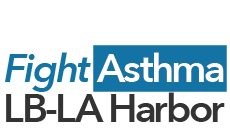Pollution Sources
Find the largest pollution sources in LB-LA Harbor by clicking the points on the map.
Pollution Source Maps
The maps pinpoint LB-LA Harbor’s largest sources of Carbon Monoxide, Nitrogen Dioxide, Ozone, and Particulate Matter pollution, which are documented to exacerbate asthma by the California Air Resources Board. The Harbor Community Benefit Foundation reports the area has high levels of emissions from stationary and mobile sources of pollution, along with a wide variety of other environmental hazards, and face elevated health risks as a consequence. Pollution sources are categorized according to the South Coast Air Quality Management District.
Ports of Los Angeles (POLA) and Long Beach (POLB)
Point to find the LB-LA Harbor communities exposed to pollution from ocean-going vessels, harbor craft, cargo handling equipment, locomotives, and heavy-duty vehicles.
POLA-POLB Data Methodology
Asthma Danger Levels measured the pollution levels from each POLA-POLB activity as reported by the POLA-POLB Clean Air Action Plan. The fenceline is 5.0 miles.
Sources:
POLA-POLB, “Clean Air Action Plan Emission Reduction Inventory”, 2018.
Stationary Sources
Point to find the refineries, oil and gas production facilities, electricity generation, cogeneration, and hydrogen plants in LB-LA Harbor.
Stationary Sources Data Methodology
Asthma Danger Levels measured the pollution levels of each stationary source as reported by the California Air Resources Board. The fenceline is 1.5 miles for refineries and 0.5 miles for non-refineries.
Sources:
California Air Resources Board, “Pollution Mapping Tool Sources in Your Community” 2018.
Truck Highway Traffic
Point to find the truck highway traffic corridors in LB-LA Harbor.
Truck Highway Data Methodology
Asthma Danger Levels measured the truck highway traffic volume at the highway corridors as reported by Caltrans. The fenceline is 1.0 mile.
Sources:
Community-Identified
Point to find the pollution hotspots identified by LB-LA Harbor community members.
Community-Identified Data Methodology
Pollution hotspots are identified by the Long Beach Alliance for Children with Asthma with a coalition of LB-LA Harbor community organizations. Asthma Danger Levels measured each hotspot’s census tract asthma and pollution levels as reported by the CalEnviroScreen. The fenceline is 0.5 miles.
Sources:
Long Beach Alliance for Children with Asthma, November 2020, January 2021.
South Coast Air Quality Management District, “AB617 Community Steering Committee Truck Idling Map”, 2018.
Transportation Research Record, “Diesel Truck Idling Emissions”, 2007.
